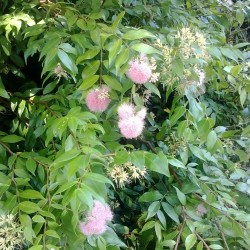05 Jan


Posted By
0 Comment(s)
3455 View(s)
Lilly Pillys are an Australian Native and the perfect choice for hedging and screening in Australia.
They are split up into three different species - Acmena, Syzygium & Waterhousea.
However with so many different Lilly Pilly varieties out there it can be confusing which one to choose!
Here are some of the most common requirements and which varieties will suit best.
To achieve taller heights than the usual 4-5m
Waterhousea floribunda
Acmena smithii
Syzygium luemannii
Syzygium australe 'Straight & Narrow'
Acmena hemilampra
For narrow
garden beds or tight spaces
Syzygium australe 'Straight & Narrow'
Syzygium australe 'Up and Away'
Syzygium australe 'Pinnacle'
Dwarf
varieties up to 1m tall
Acmena smithii 'Allyns Magic'
Syzygium 'Baby Boomer'
For green only foliage
Acmena smithii 'Sublime'
For brighter pops of coloured foliage
Acmena smithii 'Cherry Surprise'
Acmena smithii 'Purple Rain'
Syzygium 'Cascade'
Syzygium luehmannii
For NO berries
Acmena smithii 'Sublime'
Waterhousea floribunda
For coloured flowers other than white
Syzygium 'Cascade' (Pink flowers)
More frost tolerant varieties
Acmena smithii 'Sublime'
Amena smithii 'Firescreen'
Acmena smithii 'Forest Flame'
Syzygium 'Cascade'
For Shade
Most of the varieties prefer full sun but can also handle part shade
If you want a more
relaxed look without the need for hedging too often or at all, choose one of the weeping varieties
Syzygium 'Cascade'
Waterhousea floribunda
Less maintenance
Syzygium 'Straight & Narrow' - is a tighter more upright narrow lilly pilly and holds its form more
Waterhousea floribunda - weeping nature and if you have the space to leave it in its natural form
Syzygium 'Cascade' - a more relaxed foliage with a weeping nature
If you want a stand
alone lilly pilly
Waterhousea floribunda
Acmena hemilampra
If you want more of a tree form
Waterhousea floribunda
Acmena hemilampra
For a great all rounder Lilly Pilly
Syzygium 'Resilience'
Syzygium 'Select'
Syzygium paniculata 'Backyard Bliss'
Caring for Lilly Pillys
Common pests
Psyllid - Most of the above varieties are resistant to psyllid (a sap sucking insect which causes pimpling to the leaf).
The Waterhousea floribunda are a variety that are susceptible to psyllid but can easily be treated.
Scale - Use White Oil
Sooty Mould (black) - Use Neem or White Oil
Comped leaves likely due to Lilly Pilly Beetle - Use Neem or Eco Oil
Myrtle Rust - Cut off the effected leaves and spray with a fungicide
Care
Remember that pests and disease will be more attracted to unhealthy plants.
So by doing the following you can help eradicate any pests or disease taking over.
Fertilizing - In spring use a slow release fertilizer and add in some compost manure.
Mulching - place a layer of approx 5-8cm of organic mulch such as sugar cane mulch.
Watering - Lilly Pillys like good drainage soil and regular watering especially when it is particularly hot.
Pruning - Pruning is best started when the plants are young at least twice per
year in order to keep them bushy from base to top. Doing this on a regular
basis and pruning the tops and sides will also help create dense bushy
growth.
They can be cut back at any time of the year however if you are going to go
for a heavy prune this is best done in late winter or early spring. Watering
either side of pruning will help with plant stress.
